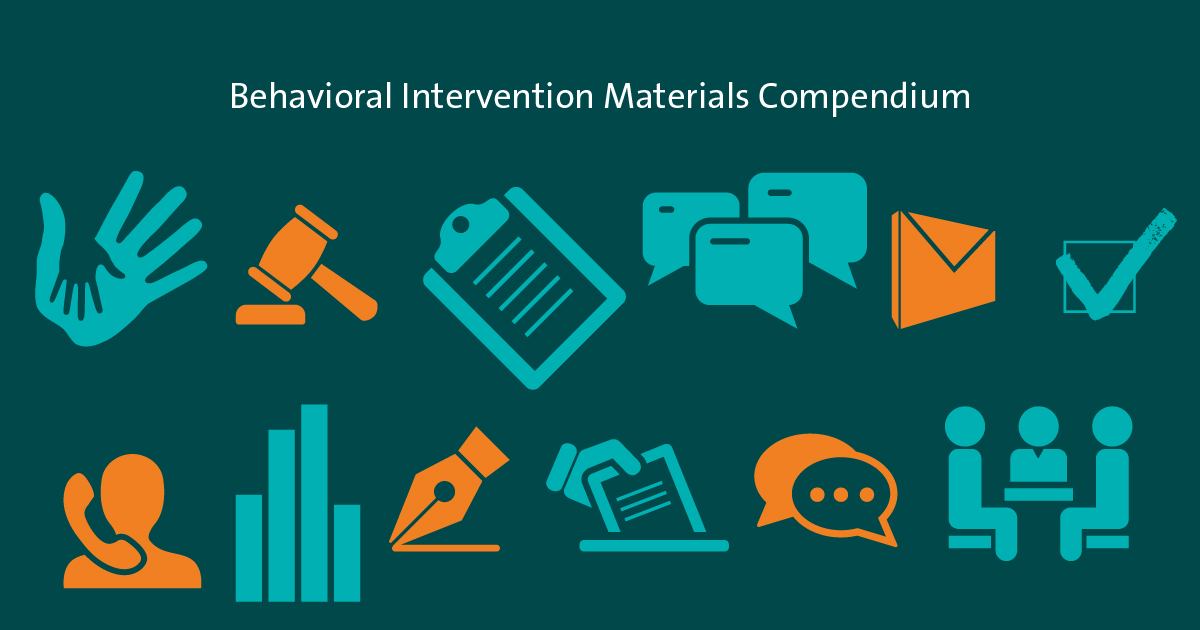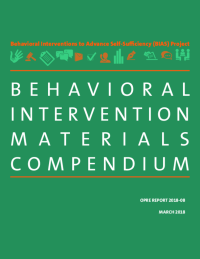Behavioral Intervention Materials Compendium

BIAS Project Overview
The Behavioral Interventions to Advance Self-Sufficiency (BIAS) project, launched in 2010, was the first major initiative to apply behavioral insights to human services programs that serve poor and vulnerable families in the United States. The project was led by MDRC and sponsored by the Office of Planning, Research and Evaluation of the Administration for Children and Families in the U.S. Department of Health and Human Services. The BIAS project built knowledge about how tools from behavioral science could be used to deliver program services more effectively, targeting three human services domains: child support, child care, and work support.
The BIAS team partnered with eight state and local agencies to design and implement 15 randomized controlled trials that incorporated behavioral insights. Each site had at least one intervention with a statistically significant impact on a primary outcome of interest. The magnitude of the improvements typically ranged from 2 to 4 percentage points (in line with other behavioral research findings) — and, in several cases, impacts were much larger. These positive impacts may be considered large relative to the costs for the interventions, which were typically around $4.00 or less per person. For more background on the project, view the BIAS Infographic and the BIAS final report.
Developing Behavioral Interventions
The BIAS team used a systematic approach called “behavioral diagnosis and design” to develop interventions. This process consisted of identifying problems that were appropriate for behavioral interventions, diagnosing the underlying behavioral reasons for each problem, designing interventions, and conducting rigorous tests to determine whether the interventions improved outcomes. Each intervention was customized to fit its context, but all involved at least one of the behavioral principles described by the SIMPLER framework. Created by MDRC for the BIAS project, SIMPLER stands for social influence, implementation prompts, making deadlines, personalization, loss aversion, ease, and reminders.
Purpose of This Compendium
The BIAS team implemented 15 behavioral interventions, involving close to 100,000 clients. This compendium contains all the printed materials that were designed as part of those interventions. (Some interventions included nonprinted components, like robocalls and personal phone calls, which are not reflected in this document.) The interventions contribute to a body of knowledge about what works in human services settings. The BIAS team’s objective in sharing these materials is to assist practitioners and program designers in developing future behavioral interventions and, more specifically, in crafting written materials that are informed by behavioral science.
In sharing these intervention materials, the team hopes that others can learn how specific behavioral concepts were operationalized in different settings and formats (that is, mail, text messages, and email). The team also aims to spark future innovative interventions and help scale behavioral interventions where evidence has already been built.
How to Read This Compendium
The compendium is arranged by program area domain, state or local agency, and type of intervention. Each section begins with a summary of the particular intervention that was implemented, followed by a list of the printed materials for that intervention and copies of the materials themselves.






